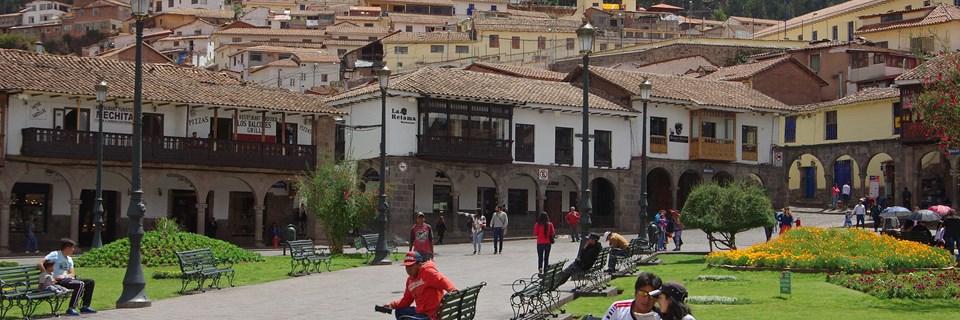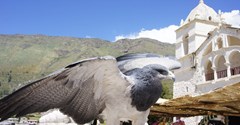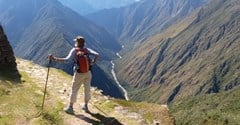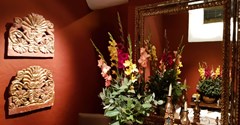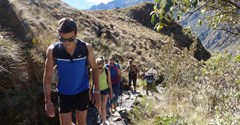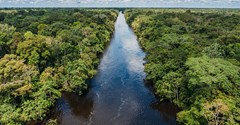Discover the best things to do in Cusco's and our favourite excursions to explore the region's Inca heritage and Andean culture.
Far from being a mere base from which to explore the Sacred Valley and Machu Picchu, Cusco is itself an integral part of any Peruvian itinerary and key to understanding the ancient Inca civilisation. Spanish churches stand upon Inca foundations, with some of the original stonework still visible, and several important archaeological sites sit nearby. It's not all about history here though, Cusco has a thriving cultural and culinary scene and a busy calendar of events and festivals. Here we present seven things to do in Cusco to explore it layers of history and Andean life. All of the below activities can be enjoyed as part of your stay in the city with Veloso Tours.
1. Discover Cusco's mix of Inca and Colonial heritage
Cusco is one of the very best places in Latin America to understand the impact the 16th century colonisation had on the various civilisations which populated the lands, least of all the mighty Incas. Grand colonial churches stand poignantly atop the foundations of what were some of the most important temples and palaces in the entire Inca empire, a vivid demonstration of their eagerness to suppress the religious beliefs of the Incas and supplant them with Christianity.
A prime example of this is the cathedral, located on the side of Cusco's main square - Plaza de Armas. It now stands where once stood the Palace of Viracocha, the Inca creator god. Among the array of fine colonial era paintings housed inside is a large picture of the Last Supper, notable because Jesus and his disciples are about to tuck into one of the more unusual of Peruvian delicacies; a guinea pig.
The most important religious site in the Inca empire was the Temple of Sun, on the site of Qorikancha. The intricate stone walls were lavishly covered in gold and richly adorned with a jewel-encrusted statue of Inti, the god of sun. Some of the most important Inca rulers were mummified here and around 4,000 priests lived on the site. So when the last vestiges of the empire fell, the Spanish wasted no time in ransacking the site and melting down what gold was left after the Incas were previously forced to part with it to satisfy ransom demands. They then destroyed what they could of the remains. The Santo Domingo church was built over and on top of the original walls and foundations.
Fortunately though, visitors can still see parts of the original structure and appreciate the ingenuity and precision of Inca masonry. Four chambers of the temple remain intact and outside you can appreciate a huge curved Inca wall which sits below the church, all the more impressive given that it was built without industrial machinery or mortar.
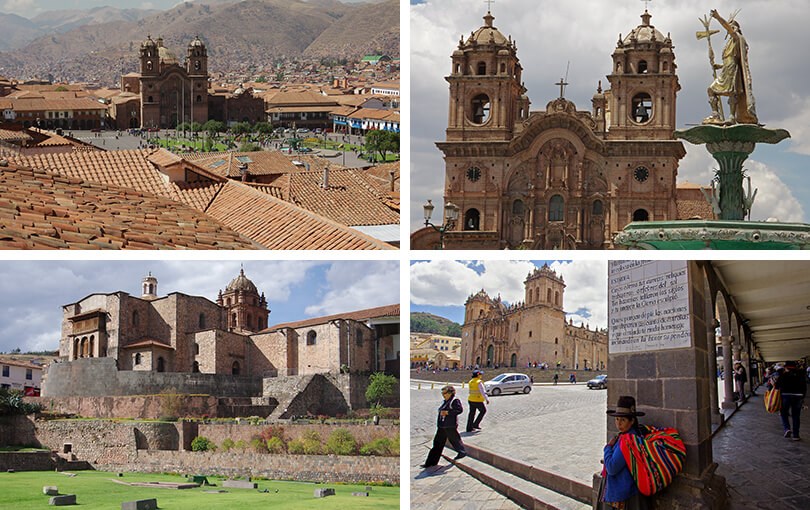
2. Climb the cobbled backstreets to find a quieter Cusco
To the east of the main square and the cathedral is the San Blas neighbourhood, reached by a steep climb past the Twelve-Angled Stone original Inca wall and up Cuesta San Blas. Here you will find laid-back cafes and restaurants, the 16th century adobe Templo de San Blas and its remarkably intricate wooden Baroque pulpit and a series of artist's studios and courtyard workshops, where you can see locals at work. Among these, the most visited is that of 20th century sculptor Hilario Mendívil. Inside you can admire some of his work, noted for the elongated necks of his subjects.
Continue on north of San Blas and you will arrive at the Plaza San Cristobal, one of the best lookout points in the city. From here you can gaze out over the red rooftops and surrounding mountains and peer into the Plaza de Armas from above. The steep streets which lead back down to the main square, particularly Pumacurco, Arco Iris and Resbalosa, are typical of Cusco's narrow cobbled streets, lined with whitewashed facades.
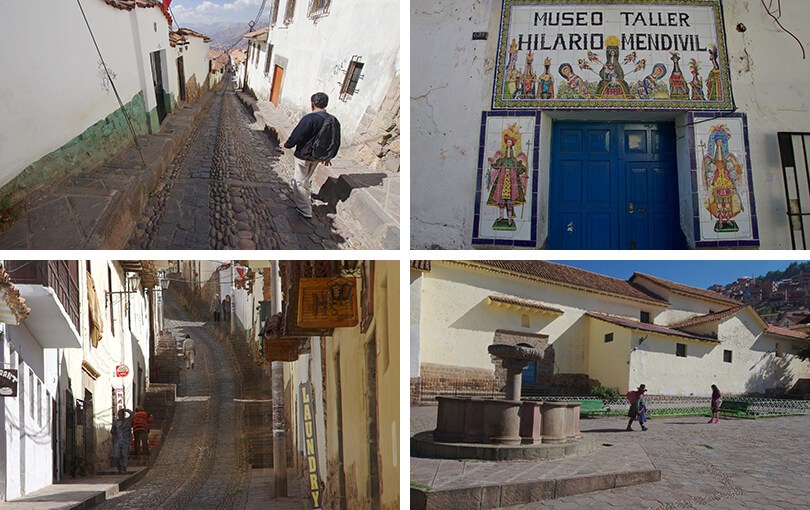
3. Explore the city's collection of fascinating museums
Cusco is a city rich in art and culture and deeply rooted in ancient and colonial era heritage, all of which can be explored in great detail at the nearby archaeological sites and in the city's collection of informative museums. A Cusco Tourist Ticket is a cost-effective way of visiting a number of these places and is split into three 'circuits'; one for Sacsayhuaman and other close-by Inca ruins, another for the most popular archaeological sites of the Sacred Valley and one which grants entrance to the museums of Cusco.
Armed with the latter, you will gain access to a host of museums which weave together the history, culture and artwork of Cusco and the Andean region. One of the most rewarding is the Historic Regional Museum, housed in the former colonial era mansion of Inca Garcilaso de la Vega, the illustrious chronicler of Inca society. A range of both Inca and pre-Inca artefacts chart the history of the area, along with some sumptuous colonial era paintings and sculptures. The Popular Art Museum and the Contemporary Art Museum showcase Andean sculptures and paintings from the modern era.
The museum at Qorikancha delves deeper into life here in Inca times, before it was replaced with a Spanish cathedral. The ticket also includes the Native Music and Dance Centre and the Pachacutec Monument, which explores the influence of legendary Inca Pachacuteq Yupank and how we led the growth of the Inca empire beyond Cusco.
4. Marvel at the magnificent Sacsayhuaman Inca ruins
Looming large over the city are the important Inca remains of Sacsayhuaman. Originally a fortified fortress and temple complex, the site was believed to have formed the head of the puma shape in which Cusco was laid-out. The large zig-zagging walls remain largely intact today, testament to the architectural ingenuity of the Incas, who designed the fortress to blend in harmoniously with the surrounding mountain landscape. It is a feat of engineering all the more remarkable when you consider that these large 100 tonne stones were quarried, cut and moved into place without sophisticated tools and then pieced together to perfection, without the use of mortar. Some 20,000 men were put to work in an extraordinarily ambitious and carefully-planned undertaking.
Sacsayhuaman was also the site of a large yearly festival, held around the winter solstice in June, known as the Inti Raymi festival. Locals in traditional dress gathered to perform dances and rituals in honour of the Inti, the Inca sun god, and it is a practice which is re-inacted every June, attracting visitors from far and wide to join in the festive atmosphere and relive the glorious days of the Incas.
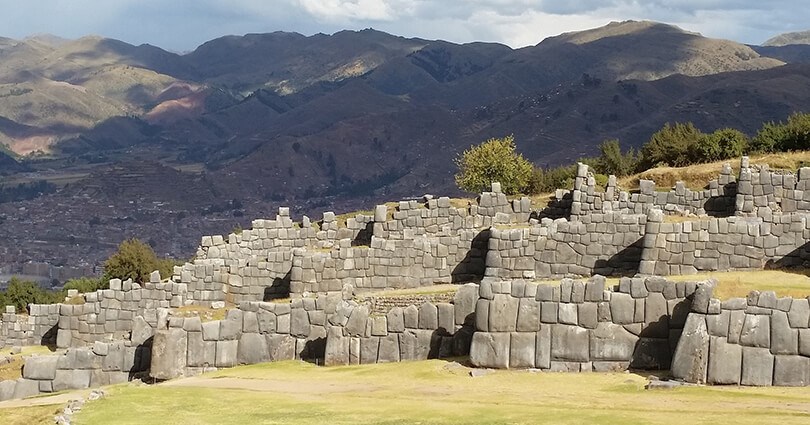
5. Ride the train to Machu Picchu
The centerpiece to any visit to Peru's Inca heartland will of course be a tour of the ancient Inca citadel of Machu Picchu, perched high up in cloud forest above steep river gorges. The most common and comfortable way to visit is to take the train from Ollantaytambo and stay overnight in one of the hotels of Machu Picchu Pueblo, a short bus ride from the archaeological site. However it is perfectly feasible to take the train to Machu Picchu and back from Cusco in one day.
Departing in the morning from the nearby Poroy station, you will take either the Vistadome, the Expedition or the luxury Hiram Bingham train all the way to Machu Picchu, a journey of just under four hours. Along the way you pass through the Sacred Valley and can enjoy vistas of dramatic mountains, ancient terracing and the flourishing Urubamba River through panoramic windows, with the vegetation turning more exuberant as you get closer. Arriving around midday, your guided tour of the famous ruins would then take place in the afternoon, with plenty of time to enjoy the views and soak up the majesty of this remote wonder. The return journey is then in the late afternoon, arriving back to Cusco for a late dinner.
Those choosing to ride the Hiram Bingham, modelled on the 1920's Pullman cars, will experience excellent on-board dining in both directions, enjoy local pisco sour cocktails and live music and can make use of the large observatory car. You will also take afternoon tea at the Belmond Sanctuary Lodge Hotel.

6. Uncover a pre-Inca culture and visit the 'Sistine Chapel of America'
One way to travel metaphorically through hundreds of years and three distinct stages of Andean history is to combine a visit to the pre-Inca city of Pikillacta with the lesser-visited Inca ruins at Tipon and the magnificent 16th century colonial church of Andahuayillas. The full day trip from Cusco will reveal the human development of the area, passing through the age of the Wari culture, through to the Inca empire and then onto the Spanish settlers and 16th century Jesuits.
Pikillacta is a large complex southeast of Cusco, thought to be the administrative centre of the dominant Wari pre-Inca civilisation. The site showcases the levels of sophistication and ingenuity with which they constructed their cities, as well as the sheer scale of the undertaking. These are hallmarks more readily associated with the Incas, but which were displayed by cultures which significantly pre-date them.
The next stop is the San Pedro Apóstol church of Andahuaylillas, built by Jesuits in the 16th century on an ancient ceremonial ground, surrounded by mountains and rural farming land. The remarkable church is known as the "Sistine Chapel of the Americas", thanks to the astonishingly ornate gilded decorations, magnificent mural paintings and sumptuous Mudéjar style ceiling of the interior. It is a shining example of Andean religious art and Mestizo architecture.
The final port of call takes you back to the pre-Hispanic era at the impressive Tipon archaeological site. This lesser-known Inca ruin offers a more intimate experience and displays outstanding traditional terracing, cascades and water canals, which were used in an elaborate agricultural irrigation system.
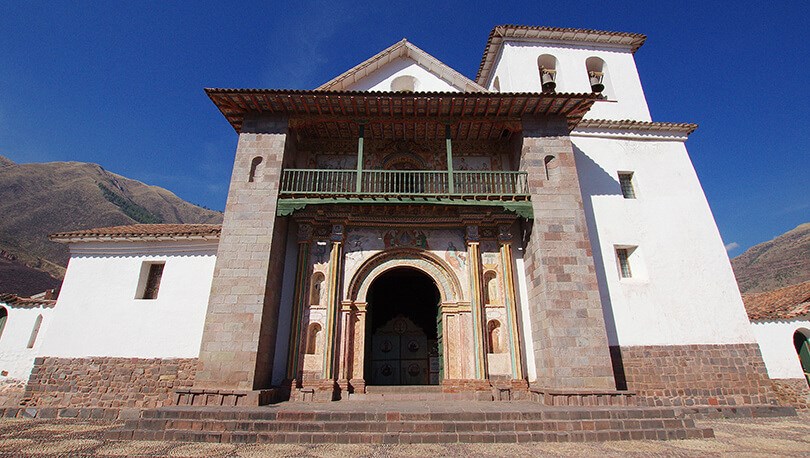
7. Visit a remote Andean village of the Sacred Valley
The final entry into our list of the best things to do in Cusco takes us into the countryside surrounding the city to experience rural life in the Andean village of Willoq. Thought to be the direct descendants of the Incas, the people of Willoq form a community which has largely resisted the outside influences of the 21st century and instead stayed true to its traditional roots. The village is known for its local weaving industry and the quality of its textiles, produced using the traditional and centuries-old back-strap loom technique.
Visitors here will get to observe this skill up close and will find friendly villagers dressed in distinctive red shawls and ponchos, just as their ancestors might have dressed many generations ago.
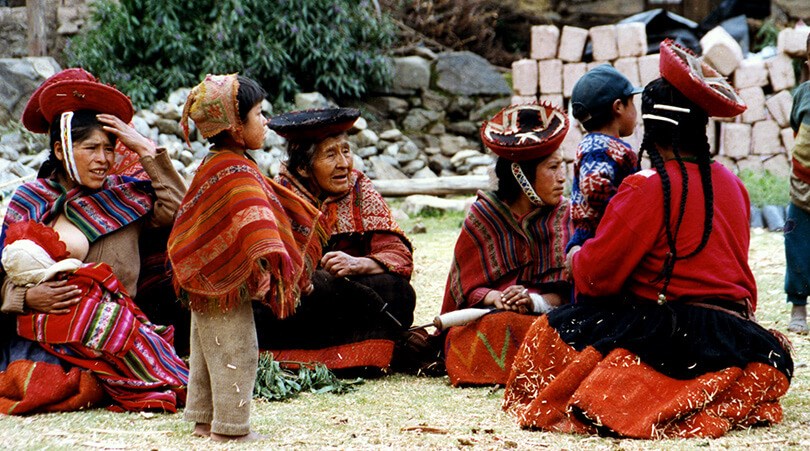 Willoq community (photo by anoldent)
Willoq community (photo by anoldent)
Visiting Cusco
Arrival: Cusco is often reached with a short flight from the coastal capital Lima, though another popular option is to arrive by road or train from the south, travelling from Lake Titicaca on a full day journey through Andean landscapes to Cusco.
When to Go: Although it is visited all year round, Cusco effectively has two seasons; the rainy one and the dry one. The summer months between November and March are generally wetter, whilst the winter, which runs from June to September, is much drier. The the temperatures remain remarkably consistent throughout the year, often around 20 degrees, but with slightly colder nights in the winter. There are several festivals which take place throughout the year in Cusco and so it is always worth checking ahead to see whether you can coincide your visit with one of these, or avoid them if you prefer.
Eat & Drink: One of the most traditional foods in Peru is quinoa and it is available in a wide range of forms throughout the city; porridge, cereals, biscuits, chocolate, soup, burger or even beer. Something that is every bit as much a national staple is the Pisco Sour drink, made with grape brandy, lemon bitters and egg white. It is a must-sample when visiting Cusco, though given the altitude here it's best not to indulge too much!
Where Next: Most travellers stop in Cusco en-route to a number of the famous landmarks and destinations which surround the city. The nearby Sacred Valley is easily reached by road, from where you can either catch a train or hike the Inca Trail to the Lost Citadel of Machu Picchu. Heading south, trains and coaches carry visitors towards the Bolivian border to visit the magical Lake Titicaca.
Choose your perfect holiday
Find inspiration from our selection of itinerary suggestions, a great starting point for your next trip
View More Tours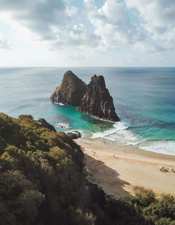
Stay in touch
Infuse your travels, with inspiration from our monthly newsletter.
READY - 12 April 2024
INDIA: Fascinating Culture & Kembh Mela Festival
LANDMARK TOURS: Multi-Country & Cross Continent. New Cosmopolitan Tour: Buenos Aires, Iguazu, Rio
CHINA & INDIA: Local Life, People & Unique Cultures
GUIDES by Veloso Tours, are the best Local Hosts
PRIVATE VILLAS: Quality Time in exclusive settings
TRAVEL INSURANCE with extensive COVID-19 cover
